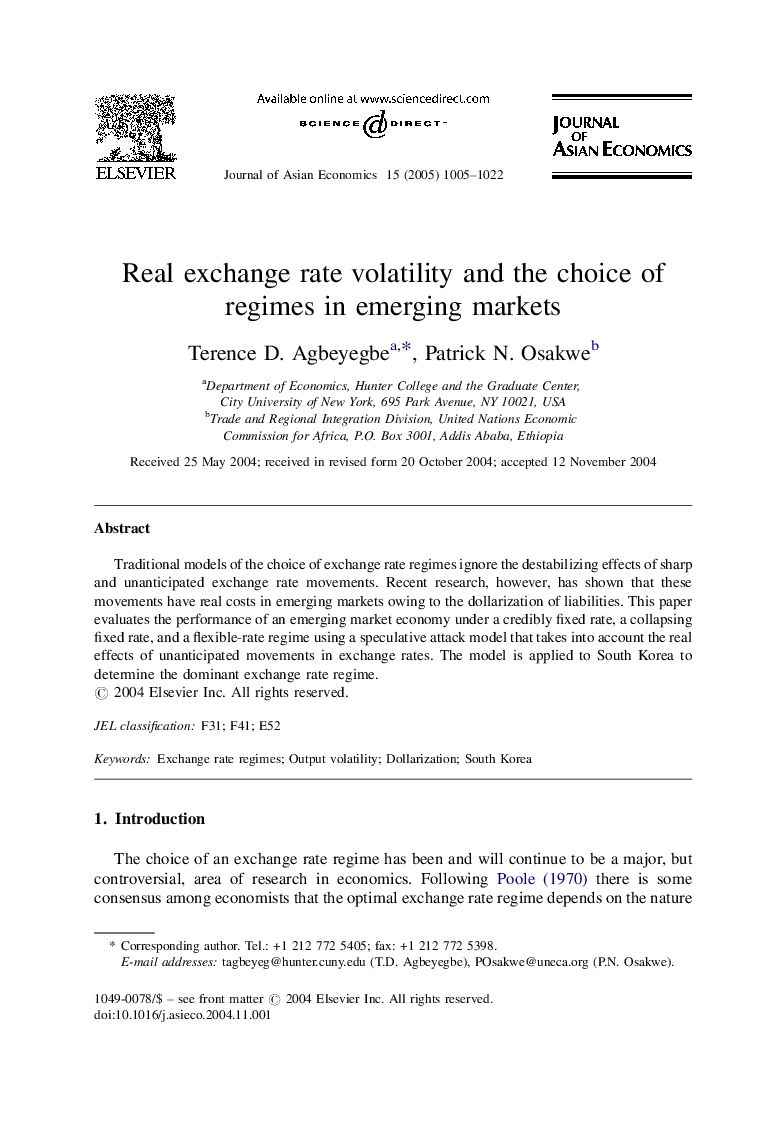| Article ID | Journal | Published Year | Pages | File Type |
|---|---|---|---|---|
| 9553661 | Journal of Asian Economics | 2005 | 18 Pages |
Abstract
Traditional models of the choice of exchange rate regimes ignore the destabilizing effects of sharp and unanticipated exchange rate movements. Recent research, however, has shown that these movements have real costs in emerging markets owing to the dollarization of liabilities. This paper evaluates the performance of an emerging market economy under a credibly fixed rate, a collapsing fixed rate, and a flexible-rate regime using a speculative attack model that takes into account the real effects of unanticipated movements in exchange rates. The model is applied to South Korea to determine the dominant exchange rate regime.
Related Topics
Social Sciences and Humanities
Economics, Econometrics and Finance
Economics and Econometrics
Authors
Terence D. Agbeyegbe, Patrick N. Osakwe,
